Aloe Vera is a famous medicinal plant. It has been grown for centuries, maybe even thousands of years.
Many people want to grow their own Aloe Vera plants because of products that use Aloe Vera. You can find aloe gel in hair care items, skin products, supplements, drinks, and even food.
Let’s explore how to grow and care for Aloe Vera plants.
5 Key Takeaways on Aloe Vera Care
- Aloe vera is a versatile and medicinal plant. It has many species like Aloe aculeata and Aloe brevifolia. This plant offers health benefits and adapts to different climates, from tropical to arid.
- Aloe vera thrives in well-draining soil. It likes bright, indirect sunlight. You can grow it indoors or outdoors.
- Water the plant deeply but not often. Let the soil dry out between waterings. This prevents root rot, especially indoors with low humidity.
- Aloe vera prefers temperatures between 55°F and 80°F (13°C to 27°C). Protect it from frost. It grows best in warmer climates or indoors during cold months.
- Regular pruning and repotting every 2-3 years keep it healthy. You can propagate it using offsets, leaf cuttings, or stem cuttings. Each method needs specific care for success.
Overview of the Aloe Vera Plant
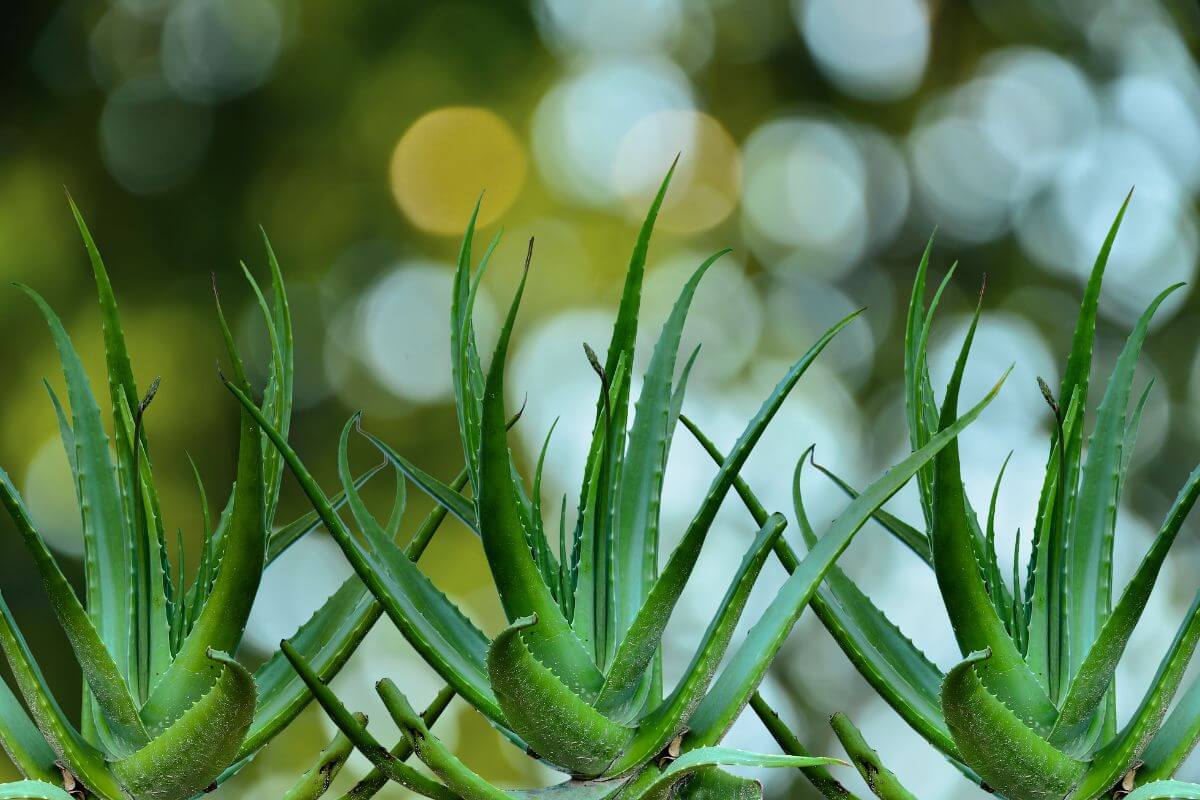
Aloe vera is more than just a plant. It has many species and types, each with its own special features and health benefits. There is the spiky Aloe aculeata and the blue-leaved Aloe brevifolia. Each type adds to the beauty and usefulness of this amazing succulent.
| Aspect | Details |
|---|---|
| Description | A succulent plant from the Aloe genus, prized for medicinal and cosmetic benefits. Originally from the Arabian Peninsula, it thrives in tropical climates worldwide. |
| Size | Typically reaches 60-100 cm in height, with thick, fleshy leaves that are green to grey-green with serrated edges. |
| Flowers | In summer, mature plants produce yellow tubular flowers on spikes up to 90 cm tall. |
| Active Compounds | Contains over 75 active compounds including vitamins, minerals, enzymes, and amino acids. |
| History | Used medicinally since ancient Egypt. |
| Common Uses | Found in cosmetics, skin lotions, and herbal remedies. Aloe vera gel is applied topically for skin conditions and minor burns. |
| Safety | Generally safe for skin application but may cause irritation in some individuals. Not safe for ingestion; can cause stomach issues and potentially kidney failure. |
| Varieties | Includes several hundred varieties such as Aloe aculeata, Aloe brevifolia, Aloe arborescens, Aloe ferox, and Aloe barbadensis miller (often considered synonymous with Aloe vera). |
Aloe Vera Care
Aloe vera grows well outdoors in dry climates with well-draining soil. It does not need much rain. In colder places, you can grow it indoors then move it outside in summer.
Soil for Aloe Vera
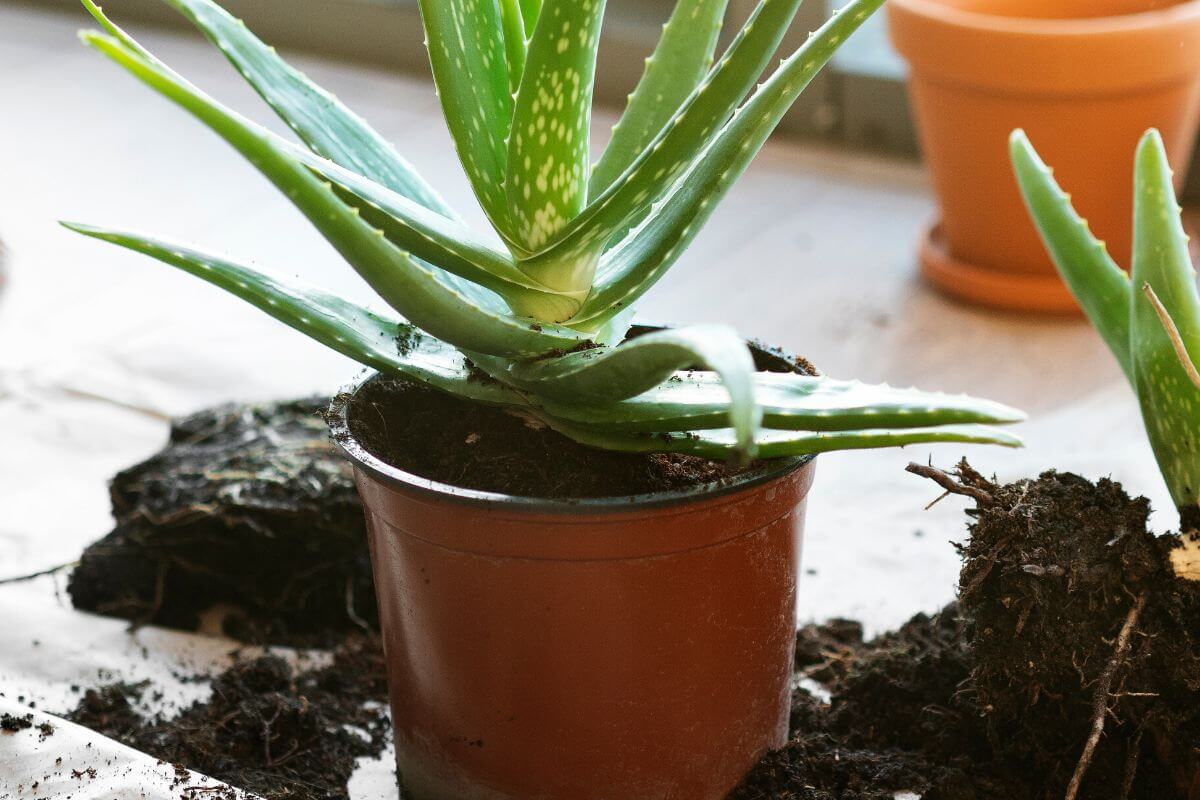
The best soil mix for Aloe vera needs to drain well. Use coarse sand or grit for drainage. Add porous materials like perlite or pumice for aeration. Include some organic matter like potting soil or compost for nutrients.
Good drainage is key. It prevents root rot by letting water pass through quickly. Aloe vera also likes a neutral pH, around 6 to 6.5.
Here’s a simple soil mix recipe:
- 1 part porous material (perlite, pumice, or Akadama)
- 2 parts drainage material (coarse sand or grit)
- 2 parts organic material (potting soil with compost)
Regular potting soil holds too much moisture. It’s not good for Aloe vera. You can use commercial succulent or cactus soils. Just check that they aren’t too nutrient-rich.
Many growers like to make their own soil mix. This way, they control the exact composition. It’s also smart to replace the soil every 3 years. Do it sooner if the plant looks unhealthy.
When potting Aloe vera, focus on drainage and aeration. Add just enough organic matter for nutrients. This mimics the plant’s natural desert habitat. It helps prevent overwatering and root rot.
Light for Aloe Vera
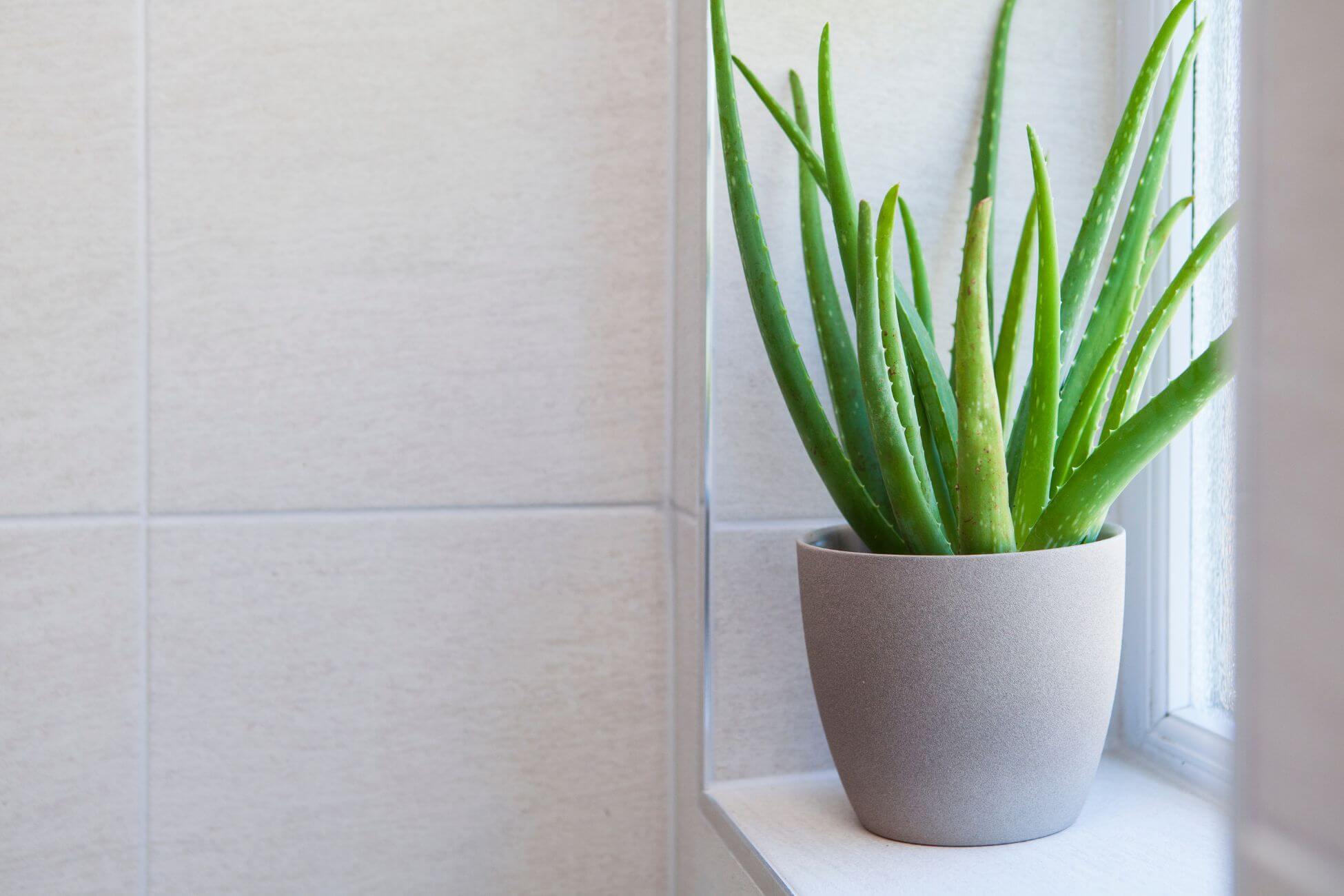
Aloe vera loves bright, indirect sunlight. It needs about 6 hours of light each day but not direct sun.
Indoors, put your Aloe vera near a south or west-facing window. This gives it the most light. But be careful. Sudden direct sunlight can burn its leaves if you move it from a shady spot.
Outdoors, Aloe vera does well with 2-3 hours of direct sun in the morning. It should be protected from the strong afternoon sun. If it doesn’t get enough light, its leaves may droop or stretch out.
Keep Aloe vera away from hot glass in west-facing windows to avoid burning. If natural light isn’t enough, use strong grow lights to mimic full sunlight.
Water and Humidity for Aloe Vera
Water your Aloe vera about once every three weeks. In winter, water it less often. Check the soil by letting the top 3-4 inches dry out completely before watering again. Water deeply so excess water drains out.
Adjust your watering as the seasons change. Water less in the fall and winter when the plant is less active. Always use well-draining soil and pots with drainage holes to prevent water buildup.
Wait until the leaves feel slightly less firm before watering again. This shows the plant is thirsty and helps avoid overwatering and root rot. Aloe vera likes dry conditions and doesn’t need high humidity indoors. Central heating can actually help by drying the air.
Outdoors, sun and wind can dry out the soil quickly. So, outdoor plants may need more frequent watering.
Temperature for Aloe Vera
Aloe vera grows best in temperatures between 55°F and 80°F (13°C to 27°C). This range is perfect for its growth. It likes it warm but can handle small changes within this range.
Aloe vera can’t handle cold. If it gets below 50°F (10°C), the plant can suffer. If it stays below 40°F (4°C) for too long, it might die. It can handle heat but gets stressed if it’s always above 90°F (32°C).
Inside, most homes have the right temperatures for Aloe vera. Outside, you should bring it in or protect it if it gets below 50°F (10°C). This is especially true in USDA Hardiness Zones 10-12 where it usually grows well outside.
Don’t move Aloe vera quickly between inside and outside. Sudden changes can stress it.
Fertilizer for Aloe Vera
Aloe vera doesn’t need much feeding. You should feed it once a year in spring with succulent fertilizer. Use a water-based fertilizer at half strength. Make sure it has plenty of phosphorus for healthy growth.
Pruning and Repotting Aloe Vera
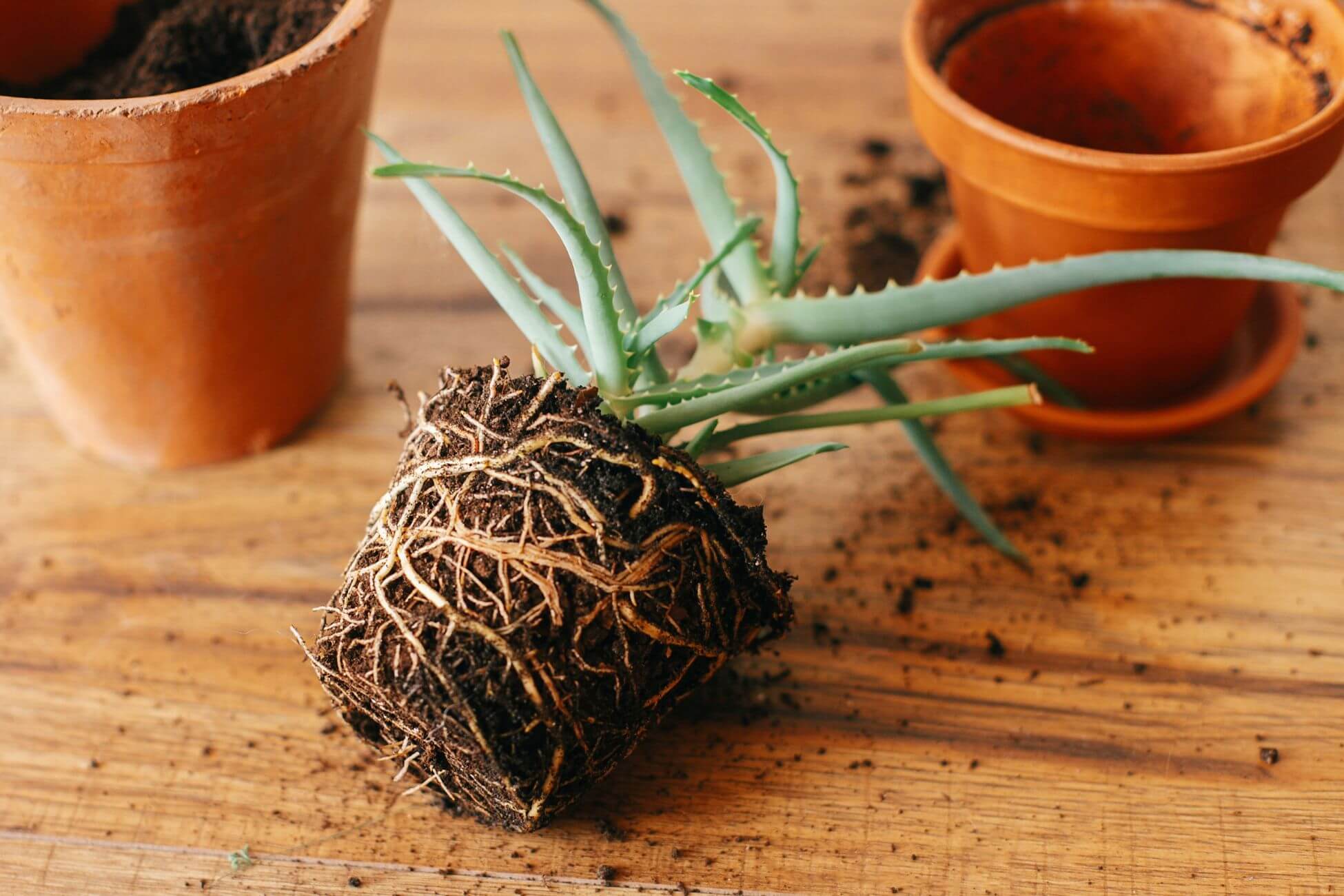
To keep your Aloe vera healthy and thriving, you need to prune and repot it correctly. Proper care will promote growth and maintain its medicinal properties for various uses.
Pruning Aloe vera:
- Prune once a year or as needed, typically during the growing season (spring or early summer).
- Avoid pruning during winter dormancy.
- Use sharp, clean scissors or pruning shears.
- Remove dead, dying, or damaged leaves at the base.
- Trim entire leaves that are older yellowing at the bottom.
- Optionally, remove excess outer leaves if the plant is too large.
- Make clean, angled cuts close to the stem without cutting into it.
- After pruning, avoid watering for a few days to let cuts heal.
- Ensure the plant receives adequate sunlight for recovery.
Repotting Aloe vera:
- Repot every 2-3 years or when the plant outgrows its current pot.
- Choose a pot slightly larger than the current one with drainage holes.
- Repot in spring or early summer during the active growing season.
- Use a well-draining cactus or succulent potting mix.
- Gently remove the plant from its current pot, tapping the sides if needed to loosen.
- Shake off excess soil and inspect the roots for any damage or rot.
- Trim any damaged or rotting roots with clean scissors or pruning shears.
- Place the Aloe plant in the new pot, ensuring the top of the root ball is level with the pot’s rim.
- Fill in around the roots with fresh potting mix, pressing lightly to secure the plant.
- Wait a few days before watering to allow any root injuries to heal.
- Place the repotted plant in a location with bright, indirect light for optimal recovery.
Propagating Aloe Vera
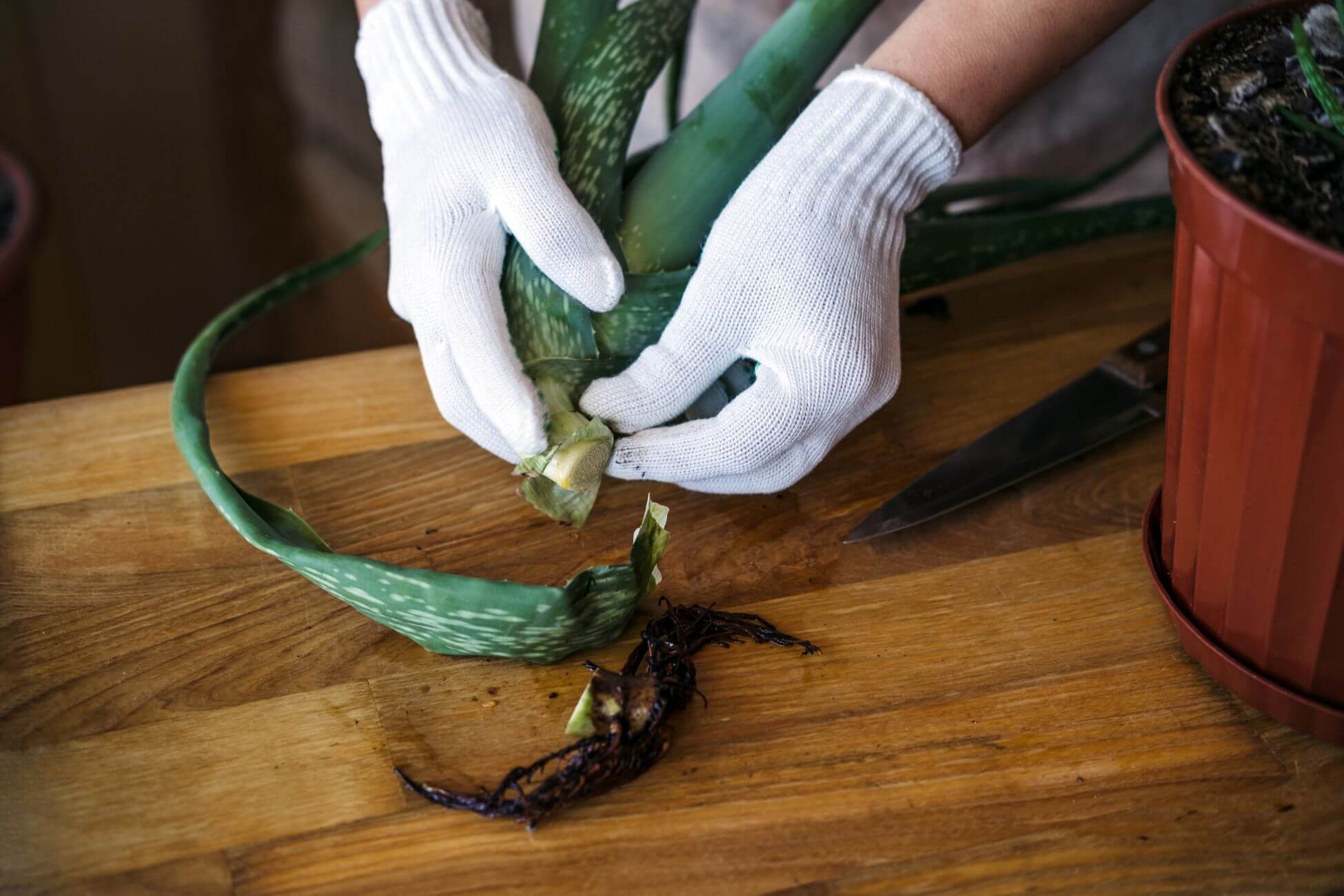
Propagating Aloe vera is simple with several methods to try:
- Offsets or “Pups” – Wait until the baby plants are about 1/5 the size of the parent plant. Remove the offset carefully ensuring it has its own roots. Plant it in well-draining soil.
- Leaf Cuttings – Take a healthy leaf from near the base. Let the cut end dry for a few days to prevent rot. Cut the leaf into 3-4 pieces with growth nodes. Plant them in well-draining soil. This method is slower and less reliable than offsets.
- Stem Cuttings – Make sure some stem tissue is attached to the leaf. Let the cutting air dry for a few days. Place it in a well-lit area avoiding direct sunlight. Roots and new pups usually form in 1-2 weeks. Once roots form, plant the cutting in soil.
- Seeds – This method is challenging. Use controlled greenhouse conditions and follow the seed package instructions carefully for the best results.
- Learn more about Aloe Vera Plant Propagation
Aloe Vera Pests, Diseases, and Problems
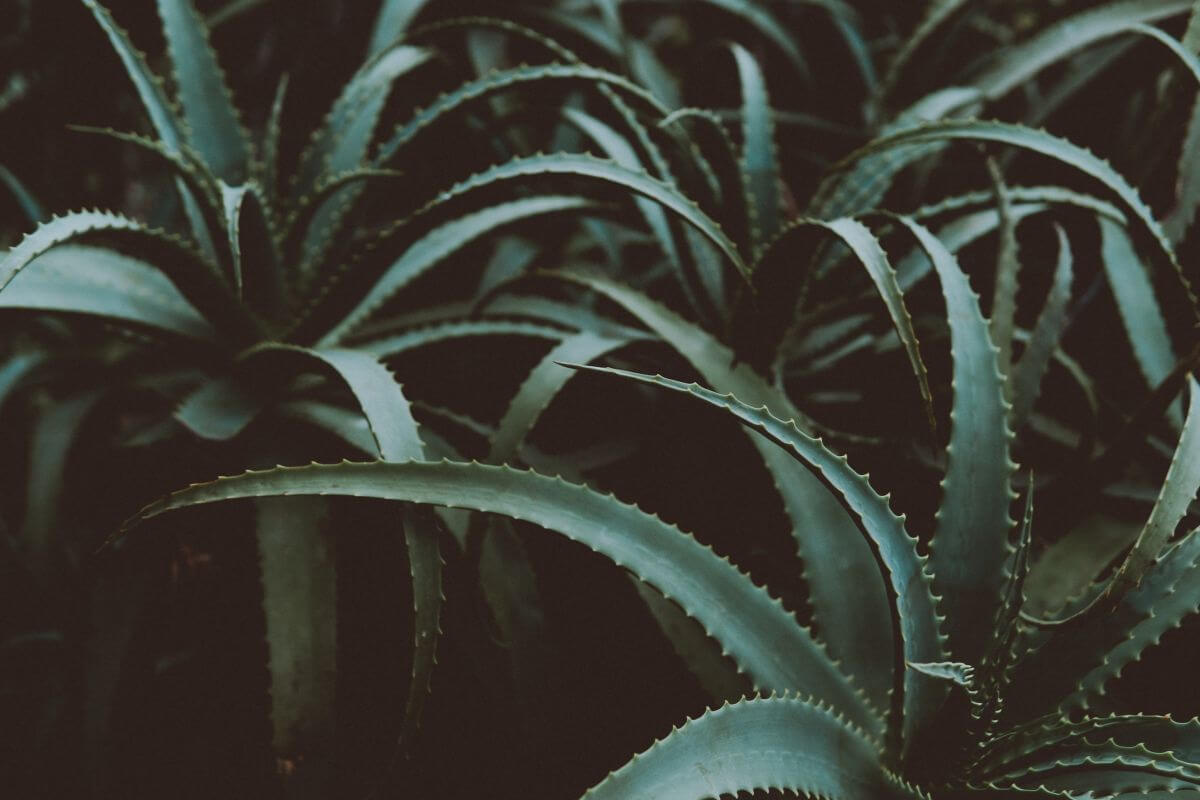
Aloe vera can get pests like mites, scale, and mealybugs. Mealybugs are easy to handle. Just spray the plant with water and wipe them off with a soft cloth.
For mites, you need to cut off the infected parts. Scale needs a bit more work. Mix one cup of isopropyl alcohol, one cup of water, and a tablespoon of insecticidal soap. Spray this mix on the plant every third day for two weeks.
Aloe vera has common problems, usually from too much water or not enough light:
- A mushy stem means overwatering. Cut the plant above the mushy part to save it.
- Brown and mushy leaves also mean overwatering. Remove the bad parts and water less.
- Dried and brown leaves mean the plant needs more water. Water it well and trim dying leaves.
- A leggy and thin plant needs more bright light.
- Brown leaf tips can come from too little water or too much direct sunlight.
Take these steps to keep your Aloe vera healthy.
Growing Aloe Vera Final Thoughts
Aloe vera is a great plant for many climates. You can grow it indoors or outdoors. There are different types like Aloe aculeata and Aloe brevifolia. Each type has unique features. Aloe vera adds beauty and is useful too.
People have used it for medicine since ancient Egypt. Today, it’s popular in skincare. Aloe vera is easy to care for and very resilient. This makes it a favorite for many plant lovers.
If you learn how to grow it well, you can enjoy its benefits for many years.
Growing Aloe Vera FAQs
1. Do Aloe Plants Need a Lot of Sun?
Yes, they like a lot of sunlight, but make sure it’s indirect light. Direct light will scorch the leaves.
2. What Part of the Aloe Vera Plant Is Poisonous?
All parts of the aloe vera plant contain sap which contains chemicals called anthraquinones. The most toxic portion of the plant is the inner core where the latex is produced.
3. Do Aloe Vera Leaves Grow Back?
Unfortunately not, once the outer layer of the aloe vera leaf has died away, there is no way to regrow new leaves. However, the center of the plant continues to produce new growth throughout the year.
4. Are Coffee Grounds Good for Aloe Vera Plants?
No, coffee grounds should never be used as fertilizer for aloe vera plants, because coffee grounds are acidic. That can lead to the roots dying as aloe vera plants do best in neutral soil, and not acidic soil.
5. Can You Eat Aloe Vera Plant Raw?
You cannot eat aloe vera plants raw, because it is poisonous if ingested. But you can use the aloe vera gel on cuts and scrapes as a relief cream. Make sure you wash your hands thoroughly afterwards.
6. Are Aloe Vera Plants Dangerous?
Aloe vera is a medicinal plant if applied topically, but it is dangerous if ingested by humans, cats, and dogs. In those instances, the person usually vomits up the contents of their stomach within 24 hours. There are other more common side effects such as nausea, diarrhea, vomiting, and abdominal pain.
7. Can You Use Aloe Vera Straight From the Plant?
Yes, you can take aloe vera directly from the plant. There’s no need to process them or anything else. Just remember to wash your hands after handling the plant, so you don’t accidentally ingest some of the poison later.
For other houseplant care and grow guides, check out these articles:


